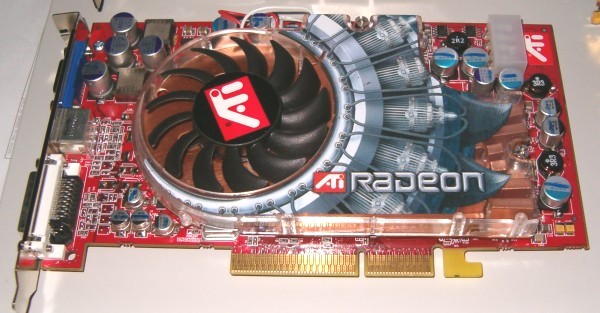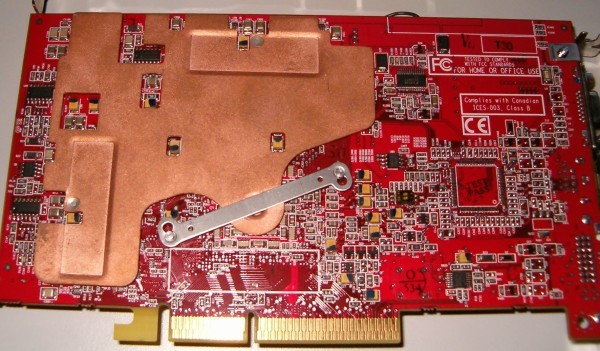R360 In More Detail


While it's not immediately apparent from the above shots of ATI's 9800XT reference board, before we get into GPU specifics, 9800XT makes use of a new PCB layout compared to 9800 Pro. Presumably to effect better GPU and memory module cooling, along with smoothing out power delivery, the new PCB is actually a little smaller than the outgoing design used with the 256MB 9800 Pro. With 59xx cards from NVIDIA arriving with enough PCB space to block out the sun, it's refreshing to see power packed into a smaller package.
Still made by TSMC with their 150 nanometre process technology (unlike the 130 nanometre I claimed in the 5950 Ultra review spec table, oops), R360 is a simple cleanup of R350's core. The changes remove nasty hotspots on the core, areas of the die that run hotter than the rest under normal loads. While it's not really a problem to cool R350, making it easier on R360 allows for the bump in clock speed.
ATI claim more overclocking headroom with R360, compared to R350. Indeed, that's shown in their inclusion of Overdrive in their latest CATALYST driver suite. Overdrive dynamically adjusts GPU core clock depending on monitored temperature, giving you a performance boost if things are nice and cool. It never drops below stock clocks and never goes much higher than stock, but it's free performance, sanctioned by the factory. At least on boards that more closely follow the above reference design, as we'll see later. 9600XT doesn't get Overdrive in CATALYST 3.8, instead having to wait till CATALYST 3.9, but that doesn't mean all 9800XT's get it either.
I'll cover card clocking properly later, but let's just say that ATI's claims about a little more overclocking headroom are true, but maybe not in all cases. All will be revealed in further pages.
The reference board ships with the regular DVI, S-Video and analogue hookups that are common to nearly all reference designs from all manufacturers, not just ATI. The retail board I'm looking at today does things slightly differently though.
So with a tweaked core, tweaked PCB, some more clock speed on both core and memory, 256MB memory as standard (but look out for partner 128MB boards from brave manufacturers in the near future) and ATI's legendary DX9 performance abilities, 9800XT looks like something special, if a little expensive. But reference boards are boring right? What about a retail sample of 9800XT with a twist?









